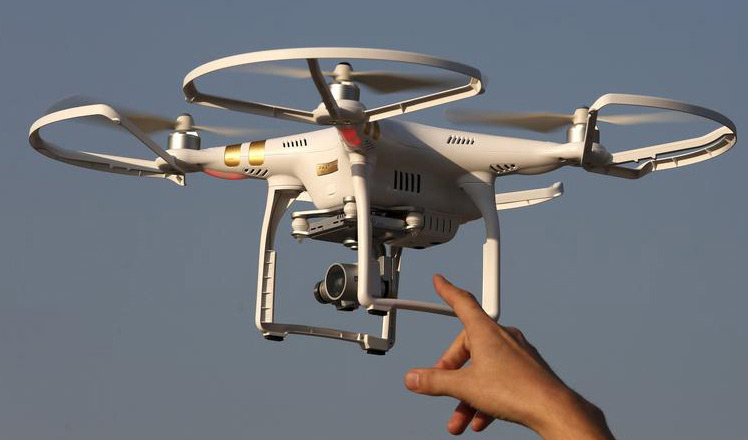China's Monkey King sharpens eyes to search for dark matter
Updated: 2016-01-21 15:04
(Xinhua)
|
||||||||
BEIJING -- Scientists have begun calibrating China's first dark matter probe in order to produce more accurate data, more than a month after the detector started to search for signals of the invisible material.
The Dark Matter Particle Explorer (DAMPE) Satellite, dubbed "Wukong" after the Monkey King character from the Chinese "Journey to the West" legend, was launched on Dec. 17, 2015, on a Long March 2-D rocket from Jiuquan Satellite Launch Center.
Like the Monkey King who can see through objects with his sharp eyes, the satellite has the most sensitive and accurate detectors especially designed for dark matter. These started working a week after the satellite entered a sun-synchronous orbit.
Chang Jin, DAMPE chief scientist and vice director of the Purple Mountain Observatory, said Wukong has already collected more than 100 million high energy particles, including protons, alpha and cosmic-ray particles and nuclides. Scientists will look for high-energy electrons and gamma rays among them, which could be residue of dark matter's annihilation or decay.
"Now the payload looks perfect, but it's not enough. If the calibration goes well, the signs we seek will pop out from the data," said Chang.
The payload has four major parts - a plastic scintillator array detector, a silicon array detector, a BGO calorimeter, and a neutron detector - together comprising about 76,000 minor detectors. DAMPE scientific application chief designer Wu Jian said the payload was designed with very high accuracy, but colliding with cosmic rays will change the detectors' performance, so they need constant calibration.
Wukong is sending back about 20 GB of data a day. DAMPE advanced data process sub-system designer Zang Jingjing said all the data will be analyzed by a special computer equipped with 128 10-cored CPUs.
"After calibration, the detectors will collect more useful data and screen out signal noises. That will save us a lot of time," said Zang.
Dark matter, which does not emit or reflect electromagnetic radiation that can be observed directly, is one of the huge mysteries of modern science. Exploration of dark matter could give scientists a clearer understanding of the past and future of galaxies and the universe, and would revolutionize the fields of physics and space science.
Wukong is designed to undertake a three-year mission, but scientists hope it can last five years. It will scan space nonstop in all directions in the first two years and then focus on areas where dark matter is most likely to be observed. Initial findings will be published as early as the second half of this year.
- A glimpse of Spring Rush: little migrant birds on the way home
- Policy puts focus on genuine artistic students
- Police unravel market where babies are bought, sold as commodities
- More older pregnant women expected
- Netizen backlash 'ugly' Spring Festival Gala mascot
- China builds Mongolian language corpus
- 2 Chinese nationals killed, 1 injured in suspected bomb attack in Laos
- New York, Washington clean up after fatal blizzard
- 'Plane wreckage' found in Thailand fuels talk of missing Malaysian jet
- Washington shuts down govt, NY rebounds after blizzard
- 7 policemen, 3 civilians killed in Egypt's Giza blast
- Former US Marine held in Iran arrives home after swap

 Drone makers see soaring growth but dark clouds circle industry
Drone makers see soaring growth but dark clouds circle industry China's Zhang reaches Australian Open quarterfinals
China's Zhang reaches Australian Open quarterfinals
 Spring Festival in the eyes of Chinese painters
Spring Festival in the eyes of Chinese painters
 Cold snap brings joy and beauty to south China
Cold snap brings joy and beauty to south China
 The making of China Daily's Tibetan-style English font
The making of China Daily's Tibetan-style English font
 First trains of Spring Festival travel depart around China
First trains of Spring Festival travel depart around China
 Dough figurines of Monkey King welcome the New Year
Dough figurines of Monkey King welcome the New Year
 Ning Zetao, Liu Hong named China's athletes of the year
Ning Zetao, Liu Hong named China's athletes of the year
Most Viewed
Editor's Picks

|

|

|

|

|

|
Today's Top News
National Art Museum showing 400 puppets in new exhibition
Finest Chinese porcelains expected to fetch over $28 million
Monkey portraits by Chinese ink painting masters
Beijing's movie fans in for new experience
Obama to deliver final State of the Union speech
Shooting rampage at US social services agency leaves 14 dead
Chinese bargain hunters are changing the retail game
Chinese president arrives in Turkey for G20 summit
US Weekly

|

|








